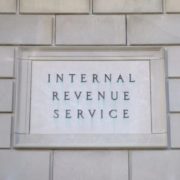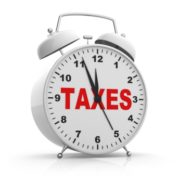SBA Provides Self-Employed and Partners Guidance on PPP Loans
PPP loan calculations for self-employeds and partnerships (04-27-20)
The SBA has finally issued guidelines on calculating monthly payroll costs for Paycheck Protection Program loans for all entities, including self-employed taxpayers and partnerships.
Self-employed individuals
Self-employed individuals with no employees determine their monthly payroll costs by dividing their Schedule C, line 31 net profit amount, up to a $100,000 maximum, by 12. If the line 31 net profit amount is zero, the individual is ineligible for a loan.
If the self-employed individual has employees, add the monthly employee payroll costs to the amount above. These payroll costs are based on the 2019 IRS Form 941 taxable Medicare wages and tips (line 5c, column 1), plus any excluded pre-tax employee contributions for health insurance or other fringe benefits, up to a $100,000 maximum per employee.
To this amount, add the following 2019 costs:
- Employer contributions for employee health insurance (portion of Schedule C, line 14 attributable to health insurance);
- Employer contributions to employee retirement plans (Schedule C, line 19); and
- Employer state and local taxes assessed on employee compensation (UI, ETT, and SDI).
Partnerships
The application for partnerships should be completed at the partnership level. Individual partners may not apply for separate PPP loans.
The maximum loan amount is based on 2.5 times the 2019 monthly self-employment earnings reported to U.S.-based general partners on the 2019 Schedule K-1, Box 14a, net earnings from self-employment tax, with a maximum of $100,000 per partner. If the 2019 K-1s have not yet been completed, they must be completed for purposes of the loan application.
This amount must be reduced by any claimed IRC §179 expense, unreimbursed partnership expenses, and depletion on oil and gas properties. The result is then multiplied by 0.9235 (to remove the “employer” share of self-employment tax).
To this amount, add any 2019:
- Monthly employee payroll costs based on the 2019 IRS Form 941 taxable Medicare wages and tips (line 5c, column 1), plus any excluded pre-tax employee contributions for health insurance or other fringe benefits, up to a $100,000 maximum per employee;
- Employer contributions for employee health insurance (portion of Form 1065, line 19, attributable to health insurance);
- Employer contributions to retirement plans (Form 1065, line 18); and
- Employer state and local taxes assessed on employee compensation (UI, ETT, and SDI).
LLCs
LLCs compute their payroll costs based on whether they are taxed as a sole proprietorship (SMLLC), partnership, or corporation.
Additional guidance
The guidance also specifies how nonprofit organizations and C and S corporations should calculate their maximum loan amounts, as well as the documentation each entity type must provide with its application.
The guidance is available at:
https://home.treasury.gov/system/files/136/How-to-Calculate-Loan-Amounts.pdf








